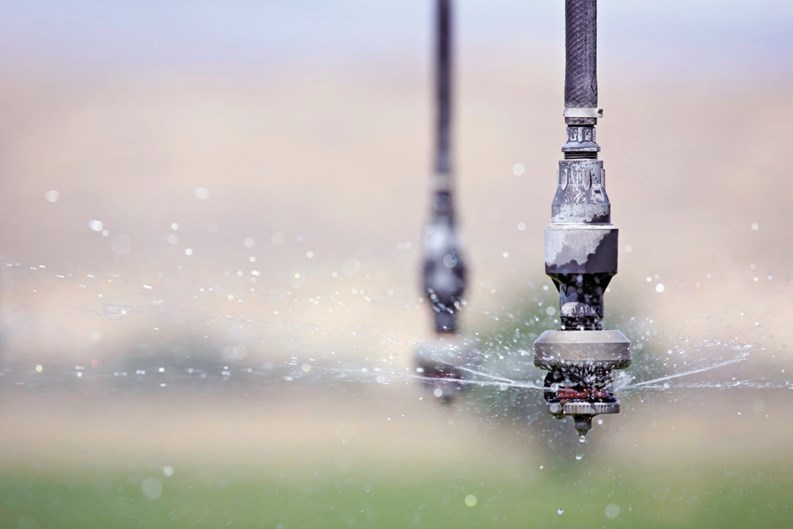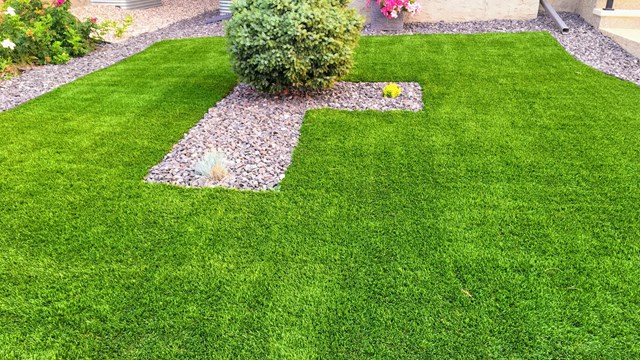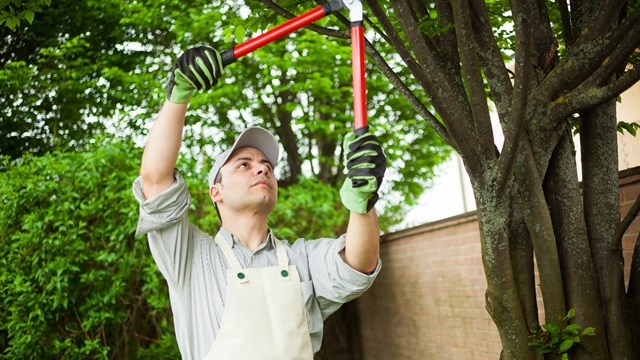When 70,000-plus football fans watch the New England Patriots play at Gillette Stadium, they are drawing on the water resources of Foxborough, Massachusetts, a community with only 29,000 residents.
How can the small town keep up with the water needs of three times its population on a Sunday afternoon?
The answer: Like more and more facilities around the Northeast, Gillette Stadium uses recycled water — up to 250,000 gallons a day — to flush toilets and supply cooling needs.
The same principles are also being applied to multi-family housing, like at the luxury New York City high-rise Visionaire. The 33-story building boasts a water-treatment system that can recycle up to 25,000 gallons of water per day for use in flushing toilets and in air-conditioning cooling units. A storm water collection system stores up to 12,000 gallons of rainwater, which is used to irrigate the building’s rooftop gardens.
The 251-unit building uses 55 percent less potable water than a conventional residential building of the same size, and just won a project merit award from the Environmental Business Journal. “It is an honor. We’re thrilled that they chose to recognize us,” said Denise Venuti Free, manager of external relations for American Water.
The Visionaire, which was designed by architect Raphael Pelli, is the sixth such environmental project that American Water’s Applied Water Management Group has designed in Battery Park City, in Lower Manhattan. The first, Solaire, received a Gold LEED (Leadership in Energy & Environmental Development) rating from the US Green Building Council, and also features a reverse-osmosis system that irrigates nearby Teardrop Park.
A Shift in Thinking
The projects stand as high-tech examples of a shift in thinking about water use taking place across the Northeast and the US. Reasons range from green consciousness to local water shortages to new regulations aimed at preventing runoff from going straight into storm water drains or water tables.
And while the country’s economic woes have slowed the pace of green building right along with other types of development, proponents say that a looming international water crisis, as well as the mainstreaming of an environmental ethos, means that rainwater harvesting will continue to attract interest. The question is whether it will eventually become as common in the US as it already is overseas.
“It all drives down to economics. If the real cost of water were charged, I could see many of these projects going forward,” said Donald Shields, vice president and director of construction for American Water’s Applied Water Management Group, which also designed the wastewater recycling system for Gillette Stadium.
Technology costs are falling, but water is still heavily subsidized, although individual states do provide incentives for recycling. For a project such as Solaire, for example, the New York Department of Environmental Protection provides a 25 percent reduction in water rates. “That helps drive the economics of the project. It gets it close, but there still needs to be some work done,” said Shields.
But economics aside, “for folks that want to do green building, it’s an absolute showcase,” said Shields.
U.S. Playing Catch-Up
While cities such as Los Angeles, Tucson, Atlanta, and Santa Fe have developed rainwater harvesting strategies, the US as a whole is playing catch-up to the rest of the world, said E.W. Bob Boulware, PE, president of the American Rainwater Catchment Association, who is writing a book on alternative water sources and helping draft national standards for the US. In places such as the Caribbean and Asia, for example, Boulware pointed out, rainwater harvesting is “no big deal – it’s just a way of life.” And while it is seen as cutting-edge technology in the US, the practice goes back millennia.
“Rainwater collection systems (e.g., cisterns, underground tanks, ponds) can significantly reduce or completely eliminate the amount of potable waterused for irrigation,” said Ashley Katz, spokeswoman for the U.S. Green Building Council in Washington. “Rainwater can be collected from roofs, plazas, and paved areas and then filtered by a combination of graded screens and paper filters to prepare it for irrigation.”
Harvesting can also reduce the amount of pollutants going into the water supply. “Storm water runoff is a major problem from an environmental perspective, because the runoff gets intolakes and ponds and rivers,” carrying with it fertilizer, manure, debris, and oil from the streets, explained Kevin Cochran, director of business development for FreeRain, a firm in Cary, North Carolina, which designs harvesting systems for industrial, military, commercial, and residential developments.
When it comes to rainwater harvesting, New England lags behind other areas of the country, said Philip Reidy, PE, president and founder of Rainwater Recovery Inc. in Waltham, Massachusetts. That’s because, up until now, water has been both cheap and plentiful. “It just doesn’t pay when water costs a tenth of a cent per gallon at the tap for the best water in the world,” said Reidy. (Boston has one of the three best water supplies in the world, he explained.) As a result, “the industry has developed slower than in more arid places. The irony is that it works better up here.” (Massachusetts has an annual rainfall of 44 inches.) Interestingly, the growing need to manage all that rain may be what helpsthe practice catch on here, Reidy said.
“Storm water is a huge issue. We’re sort of at the front of a movement where harvesting systems are being viewed from the EPA on down as effective storm water control,” said Reidy. “Storm water control is a very significant benefit.”
Another way that rainwater harvesting becomes more attractive to developers is in situations when a municipality gives the go-ahead for a development, but says that the condominium can’t access town water for discretionary purposes – such as watering the lawns or filling the pools. These types of restrictions are already in place in towns north of Boston, said Reidy. “There areaggressive regulations that are either on the books or coming,” he said.
Proposed Regulations in MA
Massachusetts, in fact, has proposed storm water regulations that would require developments with more than five acres of impermeable surfaces to treat the results of rainwater runoff. (For developments in certain watershed districts, that amount would be reduced to three acres.) And that includes roofs, as well as sidewalks and parking lots.
“Maybe all you'll have to do is keep your sidewalks clean from salt and sand and make sure it does not run off into groundwater,” said Henry Goodman, Esq., of Goodman, Shapiro, and Lombardi, LLC, in Dedham, Massachusetts. “Or you may be asked to do things that protect the groundwater and streams from pollutants on your property. Depending on the nature of your property, the size of your impermeable surfaces, and how you affect the environment, [those measures] could range from sweeping and hosing down streets to building swales or dry wells to building treatment plants.”
However, Goodman added, the regulations are still in draft form, so “all of what I said could be changed.... This is not the final version, but it is what has been proposed.” That said, he added, “something is going to be done. There’s no question about that.”
The state Department of Environ-mental Protection has not yet finalized its storm water requirements. “We had a period of robust public comment,” said Joseph Ferson, spokesman for the Massachusetts Department of Environmental Protection, “and are determining what our next steps are going forward.”
In the meantime, New England condominium developments are increasingly experimenting with low-impact development (LID) techniques, ranging from rain gardens to infiltration trenches to porous pavement, said Bob Burns, PE, of Burns Associates-Engineers in Portsmouth, New Hampshire.
At one Massachusetts condominium, Burns Associates used LID techniques to alleviate a situation where storm water runoff was damaging the parking lots. “They spent a lot of money repairing it. One grassed area was so saturated, you couldn’t walk on it,” said Burns. The company installed infiltration trenches that allowed them to dispose of the water onsite while reducing the pollutant load going into the municipal system. “The parking lots are no longer being damaged, and the town is happy with the association. It’s a win-win.”
Porous Pavement
At Boulder Hills development in Pelham, New Hampshire, Burns Associates helped construct a 900-foot roadway out of porous pavement, which allows rainwater to seep into the soil. In New England, with its severe frost/ freeze cycle, porous pavement could end up having many applications, Burnssaid. However, “it can be used only in places where the soil will drain well. And it can’t be near the water table.”
As for harvesting, Burns agreed with Reidy: “I have not heard about too much activity in rainwater harvesting, at least not in the New England area.” However, his company is currently conducting a rainwater harvesting feasibility study for one Massachusetts condominium development. Whether it is ultimately implemented, he said, will depend on the return on the investment.
In other areas of the country, state laws have translated into substantial savings. Take The Landing at South-point Condominiums, a LEED silver-rated development in Durham, North Carolina, that received the green multi-family development of the year award from the Triangle Business Journal, thanks in part to its rainwater harvesting system. “All of the water that lands on the roof is routed through downspouts to a 22,000-gallon cistern under the parking lot,” along with all the condensate from the HVAC pipes, explained Reid Bryant, a development associate at Boylan Development Co. in Raleigh, North Carolina, which built The Landing.
The development, which currently has 54 units with another 103 planned, was able to save $200,000 by going with rainwater harvesting, said Cochran of FreeRain, which created The Landing’s system.
Because all the water from the roofs is collected in the cistern – and used within the state’s required five-day time period – the roofs no longer count toward the development’s impervious surfaces total. That allowed The Landing to forego expensive under-groundsand filters and bio-retention ponds in favor of “a nice constructed wetland system,” which works in conjunction with the cistern to control stormwater runoff, said Bryant.
In addition to the immediate savings, there are some long-term perks, as well. “We don’t use any outside water for irrigation. It lowers the homeowner association’s bills and provides a steady supply of water,” said Bryant. In 2008, North Carolina suffered a months-long drought. All the cities in the area were on water restriction and all watering was banned. “Should that ever arise again, the community won’t suffer in terms of how its landscape looks,” said Bryant. “It cuts down on replacement costs for bushes and shrubs, and keepseverybody’s property values nice and high by keeping the exterior well-maintained.”
And “if you think about it,” said Burns, “it’s really a waste to take drinking water and put it on the grass.”
Yvonne Zipp is a freelance writer and a frequent contributor to New England Condominium magazine.







Leave a Comment